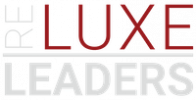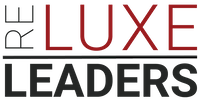Leading Luxury Real Estate Brokerages Toward Sustainable Success
Operating at the pinnacle of the luxury real estate market requires a distinct blend of strategic acumen and operational discipline. Leaders in this space face unique pressures—scaling with integrity, crafting sustainable succession plans, and maintaining a differentiated legacy. While frameworks abound, the quiet challenge is identifying what truly moves the needle in a complex and evolving landscape.
For brokerage owners and high-level leaders deeply invested in elevating their firms, clarity comes from honing actionable insights that span business models, team leadership, and financial structuring—each grounded in real-world observations from the top 5 percent of market performers.
Operational Maturity: The Keystone of Growth
Achieving operational maturity demands more than increasing transaction volume. It is about embedding systemization with precision—streamlined workflows, calibrated agent recruitment, and productivity metrics that don’t just capture activity but forecast growth potential. These are the pillars sustaining elite brokerages.
Key indicators include cost-to-serve per transaction, agent retention rates, and customer lifetime value. Data-driven refinement of these metrics enables leaders to mitigate risks of culture erosion and agent turnover, both of which disproportionately affect luxury brokerage performance.
Strategic Succession and Legacy Planning
Succession within luxury brokerages carries weight beyond financial exchange; it encapsulates stewardship of brand equity and client trust. A robust succession plan integrates talent pipeline development with legacy preservation, ensuring cultural continuity amidst evolving market conditions.
Experience shows successful transitions rely heavily on early identification of leadership that aligns with both the brokerage’s vision and the nuances of upscale client engagement. The process is deliberate, not rushed, reflecting an understanding that legacy is not inherited instantaneously but cultivated over time.
Scalable Leadership and Team Dynamics
Scaling a luxury brokerage requires leaders who operate less as task managers and more as architects of culture and structure. Team leadership models emphasize empowerment paired with accountability frameworks, pushing agents toward high performance while safeguarding the client experience.
Elite leaders invest in coaching models that transcend motivation, focusing instead on elevating agent capability through targeted skill development and strategic alignment. By fostering an environment where autonomy and consistency intersect, firms achieve scalability without dilution of quality.
Financial Structure and Sustainable Profitability
Elite brokerages maintain financial discipline that supports long-term agility. This means adopting cost structures aligned with growth objectives, optimizing commission splits, and reinvesting strategically in technology and talent.
Financial policies should reflect the realities of luxury market cycles—buffering against volatility while funding innovation initiatives that sustain competitive differentiation.
Conclusion: Navigating Complexity with Experienced Precision
For the top tier of luxury real estate leadership, progress lies in measured, data-informed decisions supported by operational rigor and a clear vision for legacy. Improvement isn’t prompted by hype but by steady refinement of scalable systems and leadership that champions both performance and culture.
Stewardship of a luxury brokerage demands an unwavering focus on these pillars—ensuring longevity, profitability, and a lasting impact on the market.





